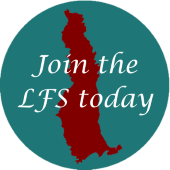History before 1836
![]() Human beings have lived on Lundy – or, at least, visited it - since the Mesolithic period (8500-5000 BC), and there are Bronze Age hut circles (2500-800 BC) in several parts of the island. The archaeology of Lundy is covered here.
Human beings have lived on Lundy – or, at least, visited it - since the Mesolithic period (8500-5000 BC), and there are Bronze Age hut circles (2500-800 BC) in several parts of the island. The archaeology of Lundy is covered here.
At Beacon Hill, next to the Old Light, is an extremely important early Christian site. Four memorial stones from between the 5th and 8th centuries can still be seen, though not in their original positions. Excavations in 1969 revealed at least 30 Christian burials around an important grave that has been interpreted by the late Charles Thomas as being that of St Nectan. Prof. Thomas conjectured that the remains of the saint were moved to Hartland in the seventh century.
 The de Marisco family were first mentioned on Lundy in 1154 when Henry II granted the island to the Knights Templar – but the de Mariscos wouldn't give it up. In the early 13th century, William de Marisco used the island as a base for raids on the North Devon coast. William's nephew, also called William, was implicated in an attempt on the king's life, and was hanged, drawn and quartered. His corpse was “sent to the four principal cities in the kingdom, by what pitiable spectacle to strike terror in all beholders”. In 1243, to keep Lundy under the control of the state, Henry III ordered the building of a castle. It's sometimes called 'Marisco Castle', which is turning history on its head - it's more accurately the ANTI-Marisco Castle.
The de Marisco family were first mentioned on Lundy in 1154 when Henry II granted the island to the Knights Templar – but the de Mariscos wouldn't give it up. In the early 13th century, William de Marisco used the island as a base for raids on the North Devon coast. William's nephew, also called William, was implicated in an attempt on the king's life, and was hanged, drawn and quartered. His corpse was “sent to the four principal cities in the kingdom, by what pitiable spectacle to strike terror in all beholders”. In 1243, to keep Lundy under the control of the state, Henry III ordered the building of a castle. It's sometimes called 'Marisco Castle', which is turning history on its head - it's more accurately the ANTI-Marisco Castle.
From around 1200 rabbit warrening was established and in 1274 it was estimated at providing 2000 rabbits a year. Part of the cost of building the Castle came from the sale of rabbit skins. A document of 1321 mentions eight tenants paying 15 shillings a year, with one tenant having a rent reduction because he kept the gannets.
Medieval Lundy passed from one noble family to another by inheritance or marriage for over 400 years. This pattern – owners who didn't live on Lundy and who rented the island out to tenants – lasted until Victorian times.
In 1750 Lundy was leased to Thomas Benson, a shipping merchant and MP for Barnstaple, who concealed smuggled goods on the island. He also contracted to transport convicts to America but instead he landed some of them on Lundy where they were used as a slave work force. Benson's career on Lundy came to an end when he was caught out in a shipping insurance fraud. He fled to Portugal, leaving the captain of the ship involved to hang for the crime.
In 1775, Lundy was bought by Sir John Borlase Warren. The island was in a poor state and he had ambitious plans for a pier and buildings. He built a new farmhouse (now Old House North and South) but eventually sold Lundy in 1781 after accumulating large gambling debts.
In 1802, Sir Vere Hunt bought the island on impulse at an auction. Also a gambler, Sir Vere died in 1818 leaving large debts so his son, Sir Aubrey de Vere Hunt, tried to sell Lundy. During this time, in 1819, Trinity House built the first lighthouse on Beacon Hill, now the Old Light.
After several failed sales, Lundy was bought by its new owner, William Hudson Heaven. Lundy then entered its first stable – though far from uneventful – period of history.
Text by André Coutanche
